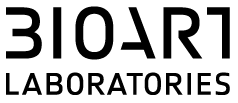Sustainability
Everyone is talking about sustainability – but what is it and on which principles is the term “sustainability” based in an urban environment?
The world in which we live is undergoing great changes never seen before in human history. It is estimated that over 50% of the world’s population now lives in urban areas and that this will likely rise to 70% by 2050. Although cities only cover a small part of the planet’s surface, they use around 80% of the world’s resources such as food, water and energy. And where there are many people, there is also a lot of waste. In the global climate protection and resource conservation such as urban areas play a key role and at the same time, these cities are also increasingly important as an economic environment and living space. Therefore the necessity to develop growing cities to be more sustainable, is greater than ever.
On the 23rd of November, BioArt Laboratories organised an inspirational evening to discuss the various facets of sustainability on a city level. After an introductory tour of the laboratory the small, yet diverse group of students and professionals, gathered for our presentation.
Bettina Graupe from the Radboud University Nijmegen spoke about sustainability from a socio-scientific point of view by placing its meaning in context of heavily urbanised areas. She explained that sustainability on the city level is most commonly perceived in terms of a circular or more efficient energy or waste management systems. Yet, we tend to forget that sustainability can already be found in simpler forms, for example: newly developed materials.
However, whether such materials are successful in being sustainable does not only depend on characteristics such as being eco-friendly or biodegradable but is also determined by the costs to make and maintain them. Good examples of such materials are bio-plastics that could ultimately replace oil-based plastics, or building materials such as self-healing concrete. Lifestyle within the city was another point of consideration during the evening. In urbanised areas, nature tends to be scarce compared to the amount of new developments that shape the landscape of our cities. Re-integrating nature into our urbanised way of life was thought to be a possible piece of the puzzle to become more sustainable. This idea can be found in initiatives using the integration of architecture and agriculture (vertical farming) or combining conventional aquaculture with hydroponics in a symbiotic manner (aquaponics).
Eventually coming back to the previously mentioned traditional thought about sustainability, circular or efficient energy and recycling systems were discussed based on examples such as Sweden’s vacuum system for handling waste. The underground pipe system offers environmental benefits by decreasing heavy waste transportation which in turn leads to reduce carbon dioxide emissions. At the same time, its low maintenance and operation costs offers financial benefits.
The evening ended with an interesting discussion about the presented concepts and how they might offer fruitful avenues for Eindhoven to become more sustainable. Overall it was concluded that a mix of new materials, innovative architecture and sustainable systems might result in the most substantial gain for a city that pursues sustainability.
Location
Achtseweg zuid 151
City
Eindhoven
Date
November 23, 2016
Category
Experiments



